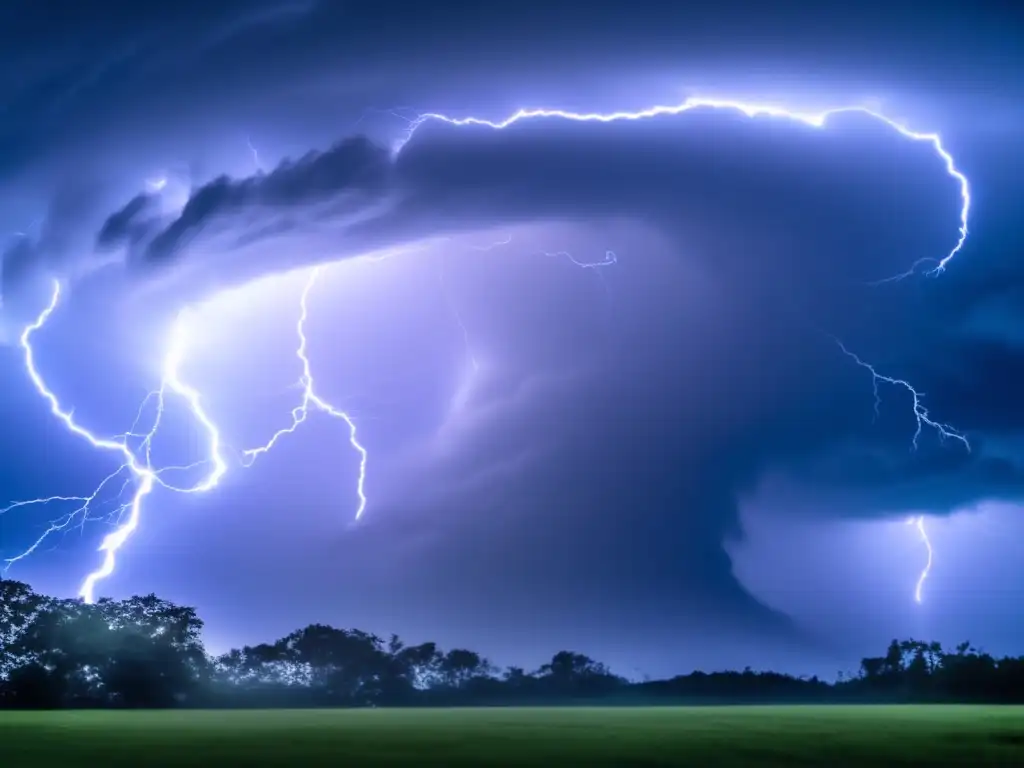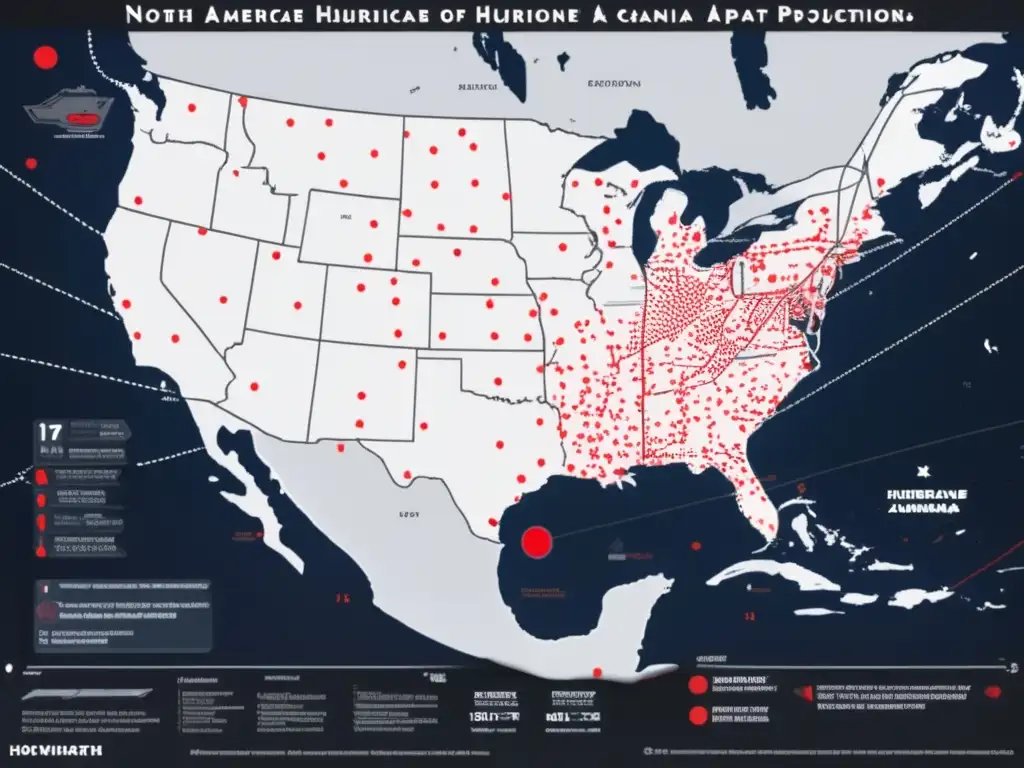The Mathematics Behind Hurricane Modeling

The Mathematics Behind Hurricane Modeling
Introduction
Hurricanes are one of the most destructive natural disasters on our planet. They can cause massive destruction to property, loss of life, and widespread power outages. To mitigate the damages caused by hurricanes, experts use sophisticated computer models to forecast where they will go and how strong they will be. These models are based on complex mathematical equations that take into account various factors that can influence a hurricane's behavior. This article will explore the mathematics behind hurricane modeling in-depth.
Underlying Principles

Hurricanes are essentially giant heat engines fueled by warm ocean water. They are complex fluid dynamics systems that can be modeled using the Navier-Stokes equations. These equations govern the motion of fluids and can be used to predict the movement of air and water in a hurricane. However, the Navier-Stokes equations are notoriously difficult to solve, especially for turbulent flows like those found in hurricanes.
Turbulence is a phenomenon that occurs when a fluid flow becomes chaotic and unpredictable. In a hurricane, turbulent vortices form and interact with each other, making it difficult to predict the storm's future path and intensity. To model turbulence, researchers use a technique called large eddy simulation (LES), which involves breaking down the fluid motion into smaller eddies and simulating their behavior. This approach can provide more accurate results than traditional models but requires significant computational resources.
The Coriolis Effect and Angular Momentum
The Coriolis effect is a force that causes fluids (including air) moving over the Earth's surface to deflect to the right in the Northern Hemisphere and to the left in the Southern Hemisphere. This effect plays a crucial role in determining the movement of hurricanes. In addition to the Coriolis effect, hurricanes obey the law of conservation of angular momentum, which explains why they rotate counterclockwise in the Northern Hemisphere and clockwise in the Southern Hemisphere.
The relationship between these two phenomena is complex and is also influenced by other meteorological factors such as temperature, humidity, and atmospheric pressure. To model hurricanes accurately, scientists must take all these factors into account.
Hurricane Modeling Techniques

Numerical Weather Prediction
Numerical weather prediction (NWP) is a technique used to forecast weather using computer models that solve the Navier-Stokes equations. This approach involves dividing the atmosphere into a three-dimensional grid and simulating the fluid motion on each grid point. NWP models can produce highly detailed forecasts of wind speed, direction, temperature, and humidity, but they require significant computational resources to run.
Ensemble Forecasting
Ensemble forecasting involves running multiple simulations with slightly different initial conditions to create a range of possible weather outcomes. This approach can help forecasters estimate forecast uncertainty and identify potential outliers. Ensemble modeling is particularly useful for hurricane forecasting, where small changes in initial conditions can significantly affect the storm's future path and intensity.
Data Assimilation
Data assimilation is the process of combining real-time observations with model output to produce more accurate forecasts. For example, scientists can use data from satellites, weather balloons, or research aircraft to improve models' initial conditions. This approach can significantly improve the accuracy of hurricane forecasting.
Hurricane Modeling Challenges

Data Quality
The accuracy of hurricane models depends heavily on the quality and quantity of input data. In some areas, particularly over the ocean, weather data can be scarce or unreliable. This can make it difficult to initialize models accurately and can lead to large forecast errors.
Model Resolution
Hurricane modeling requires high-resolution simulations to capture the complex fluid dynamics of the storm accurately. However, increasing the model's resolution requires exponentially more computational resources. This can be a significant challenge for researchers, particularly in developing countries or regions with limited access to high-performance computing resources.
Model Bias
Model bias occurs when a model consistently produces forecasts that are too high or too low compared to reality. Hurricane models can be biased in various ways, such as overestimating or underestimating storm intensity. Reducing model bias is an ongoing research challenge and requires significant effort to improve model physics and input data quality.
Frequently Asked Questions

-
What is the Navier-Stokes equation, and how does it relate to hurricane modeling?
The Navier-Stokes equations govern the motion of fluids and provide the foundation for most hurricane models. They are used to predict the movement of air and water in a hurricane.
-
What is the Coriolis effect, and why is it important in hurricane modeling?
The Coriolis effect is a force that causes fluids moving over the Earth's surface to deflect to the right in the Northern Hemisphere and to the left in the Southern Hemisphere. It is essential in determining the movement of hurricanes.
-
How do scientists use data assimilation to improve hurricane modeling?
Data assimilation involves combining real-time observations with model output to produce more accurate forecasts. Scientists can use data from satellites, weather balloons, or research aircraft to improve models' initial conditions.
-
What are some of the biggest challenges in hurricane modeling?
Data quality, model resolution, and model bias are among the most significant challenges in hurricane modeling. These require significant research effort to overcome.
-
How can hurricane modeling benefit society?
Hurricane modeling can help communities prepare for and respond to hurricanes more effectively. Accurate hurricane forecasting can save lives, reduce property damage, and facilitate more efficient resource allocation.
Conclusion
The mathematics behind hurricane modeling is complex and challenging, but it has immense practical value for those living in hurricane-prone areas. Improved hurricane forecasts can help communities prepare for and respond to these devastating storms more effectively. As research into hurricane modeling continues, we can expect further improvements in model accuracy and forecast lead time. It is a critical area of ongoing research that will hopefully lead to better protection against these destructive storms.
If you found this information useful, please share it with your friends and family. We encourage you to leave your thoughts and comments in the section below and to engage positively with hurricaneinsider.org. Together, we can build a safer and more prepared community.
Additional Resources

- National Hurricane Center Model Summary
- NOAA Geophysical Fluid Dynamics Laboratory Hurricane Modeling
- World Meteorological Organization Hurricane Modeling Guide
 Extra-Tropical Cyclones: The Cold Cousins Of Hurricanes
Extra-Tropical Cyclones: The Cold Cousins Of Hurricanes The Health Risks Associated With Hurricanes
The Health Risks Associated With Hurricanes The Bizarre Phenomenon Of Anti-Cyclonic Hurricanes
The Bizarre Phenomenon Of Anti-Cyclonic HurricanesIf you want to discover more articles similar to The Mathematics Behind Hurricane Modeling, you can visit the Basic knowledge about hurricanes: category.
Leave a Reply

Articulos relacionados: